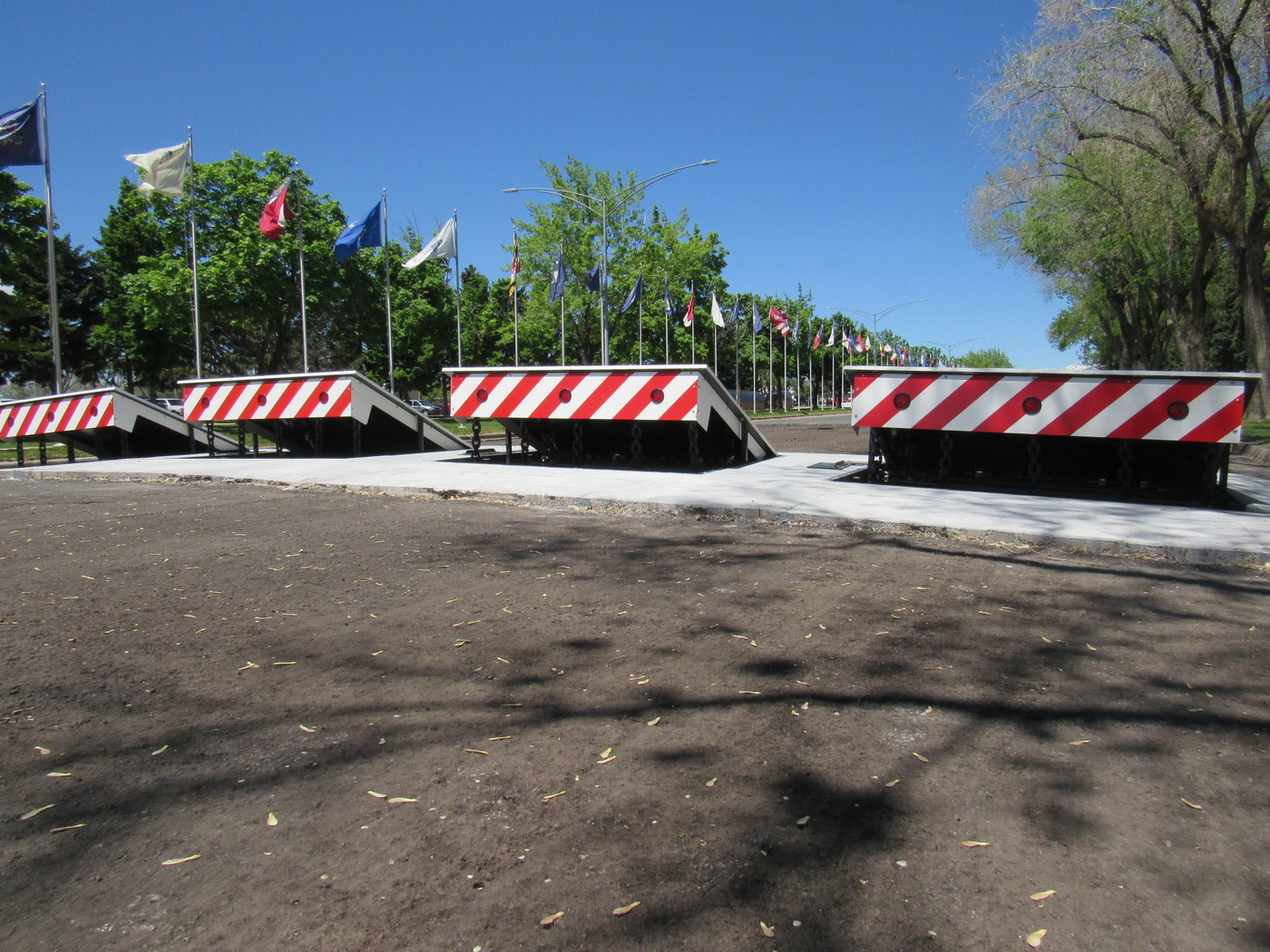Fascination About Wedge Barriers
Wiki Article
Wedge Barriers - Questions
Table of ContentsNot known Facts About Wedge BarriersWedge Barriers - An Overview

The 15-Second Trick For Wedge Barriers
g., springtime support 65 )may be taken care of to the end of the springtime pole 58 to allow compression of the springtimes 60. As the springtimes 60 are compressed in between the spring sustains 62, the springtime assembly 54 creates a force acting upon the web cam paired to the springtime rod 58 in an instructions 66. For example, the continuing to be force put on the web cam to deploy the wedge plate 16 may be given by an electromechanical actuator 84 or other actuator. Thus, the spring assembly 54 and the actuator 84(e. g., electromechanical actuator)may run together to convert the web cam and lift the wedge plate 16.
As mentioned over, the springtime setting up 54 exerts a constant force on the camera, while the electromechanical actuator might be regulated to put in a variable pressure on the webcam, therefore making it possible for the training and reducing( i. e., releasing and retracting )of the wedge plate 16. In certain embodiments, the consistent pressure used by the springtime setting up 54 may be adjustable. g., electromechanical actuator) is handicapped. As will certainly be appreciated, the springtime assembly 54 may be covered and secured from debris or various other aspects by a cover plate(e. g., cover plate 68 displayed in FIG. 4) that might be significantly flush with the raised surface 38 of the structure 14. As mentioned over, in the deployed placement, the wedge plate 16 serves to block accessibility or traveling past the barrier 10. The obstacle 10(e. g., the wedge plate 16 )might my review here obstruct pedestrians or cars from accessing a residential or commercial property or pathway. As discussed above, the barrier 10 is affixed to the support 30 secured within the foundation 14,

front brackets 71. As an outcome, the link assemblies 72 may pivot and revolve to make it possible for the collapse and extension of the linkage settings up 72 throughout retraction and deployment of the bather 10. The linkage assemblies 72 cause movement of the wedge plate 16 to be restricted. For example, if a vehicle is traveling in the direction of the deployed wedge plate 16(e. As an example, in one situation, the security legs 86 might be extended duringmaintenance of the barrier 10. When the safety legs official site 86 are deployed, the security legs 86 support the weight of the wedge plate 16 against the surface 12. Consequently, the lifting system 50 may be shut down, serviced, eliminated, replaced, and so forth. FIG. 5 is partial perspective sight of a personification of the surface-mounted wedge-style obstacle 10, highlighting the web cam 80 and the webcam surfaces 82 of the training system 50. Specifically, 2 web cam surfaces 82, which are referred to as lower camera surface areas 83, are placed listed below the webcam 80. The reduced camera surfaces 83 may be fixed to the surface area 12 (e. For example, the lower camera surfaces 83 and the mounting plate 85 may create a solitary item that is safeguarded to click for more the anchor 30 by bolts or other mechanical fasteners. In addition, 2 web cam surface areas 82, which are referred to as upper web cam surface areas 87, are placed over the webcam 80 and paired to (e. In various other personifications, interfering layers or plates might be positioned between the surface 12 and the reduced cam surface areas 83 and/or the wedge plate 16 and the upper web cam surface areas 87 As pointed out above, the web cam 80 equates along the web cam surfaces 82 when the wedge plate 16 is lifted from the withdrawed placement to the released placement. In addition, as mentioned above, the spring setting up 54 (see FIG. 3 )might provide a pressure acting on the cam 80 in the instructions 102 by means of springtime rod 58, which may reduce the pressure the electromechanical actuator 84 is required to put on the camera 80 in order to activate and raise the wedge plate 16. 1 )to the released position(see FIG. 4). As revealed, the cam 80 consists of track wheels 104(e. g., rollers), which contact and equate along the webcam surfaces 82 during procedure.
Report this wiki page